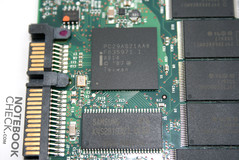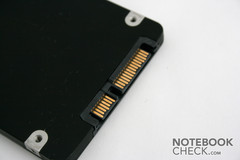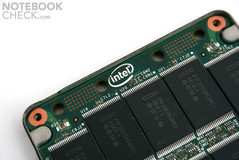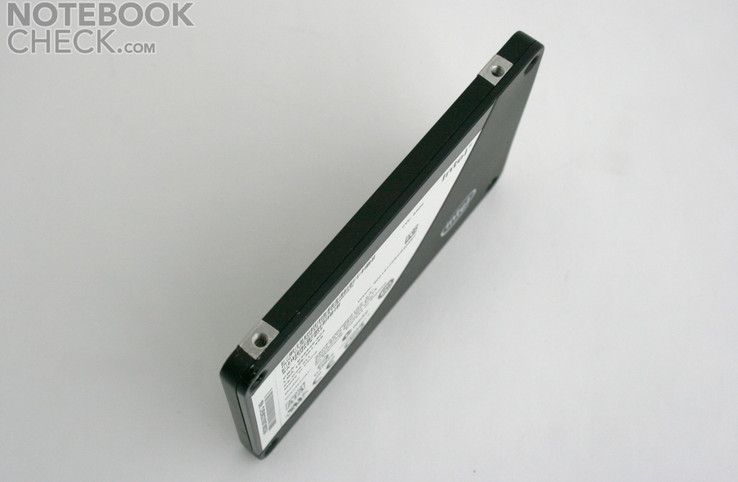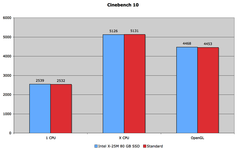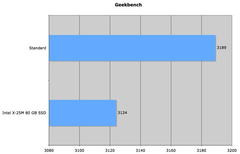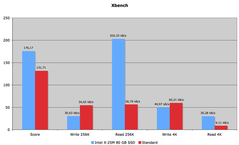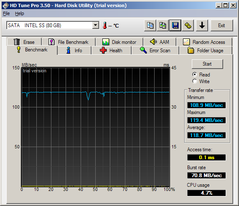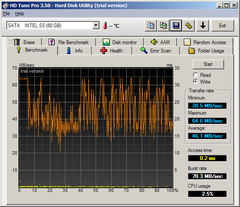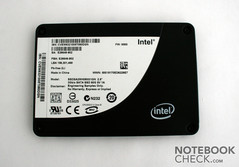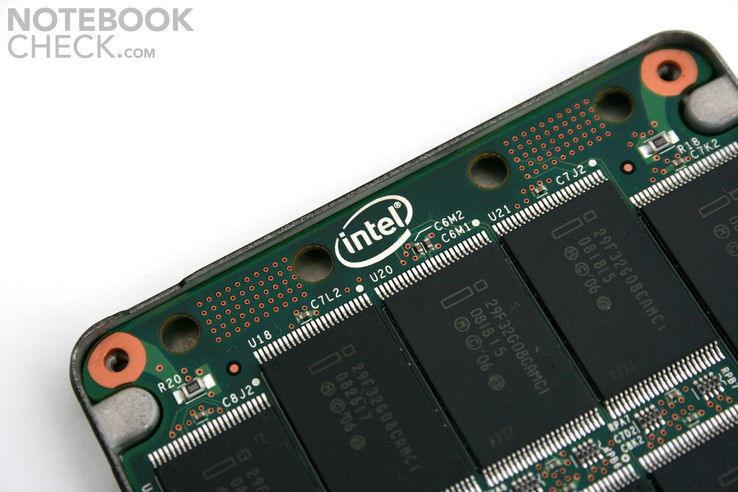Review: Intel X-25M SSD 80 GB
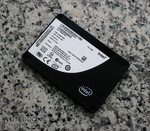
Performance at any costs? A solid state drive is probably the best storage medium for a notebook from a technical point of view. Long life, low weight, low power drain and an extremely fast access rate make solid state drives to a status symbol of notebook fans. Soaring prices and low capacities avert a larger penetration of the market, though. We have received an engineering sample from Intel for testing purposes and put the 80 GB SSD to a comparison test with one from the standard range (250 GB, 5400 rpm). The test device is an aluminum top-version MacBook with 2.4 GHz, 4 GB DDR3 RAM and 9400M.
Solid State Drive? An Explanation.
Generally, there is the same technique in a solid state drive as there is in flash memory cards (i.e. SD, MMC, CF, memory stick…) or in USB sticks. Flashed based memory has the advantage that there are no moveable parts used and in turn the power consumption and the impact sensitivity profit from that. The first SSDs were presented in 1995 but were reserved mostly for military and other special markets. Black Boxes were one of the first application areas of SSDs. One of the first devices with an optional SSD was the MacBook Air, in which the merely 64 GB sized SSD had a gigantic surcharge of 1000.00 Euros against the standard 80 GB disk. That solid state drives also follow the law of price deterioration is noticed in the same device being offered for "only" €450.00 - but in the meantime you obtain a 128 GB for that.
Test model Intel X-25M 80 GB SATA II
Our test sample from Intel listens to the name: X25-M 80 GB SATA II, has a capacity of 80 GB and the prevalent 2.5" size. The construction height is considerably smaller than that of standard disks, though. Technically, the hard disk is based on the MLC technology which generally writes slower than the still more expensive SLC construction and is partly outpaced from conventional hard disks while writing. The MLC and SLC are generally comparable when reading.
The X25-M is a multi-level-cell flash-drive (MLC) but can very well compete with the single-level-cell drives (SLC) on the market.
Intel achieved this with a 10 circuit flash connection and used a DRAM buffer in order to optimize writing.
Currently 50-nm NAND-flash stores 4 GB per chip. Intel uses 20 of these and bonds 2 NAND-flash units to one circuit. This explains the somewhat unusual capacity of 80 GB. (Normally a potency of 2 is declaimed) Intel distributes by using an intelligent algorithm (Write Amplification) the read and write process on these 10 circuits and extends the life expectancy and performance with that.
The Intel slogan "Better by Design" can be applied in this case.
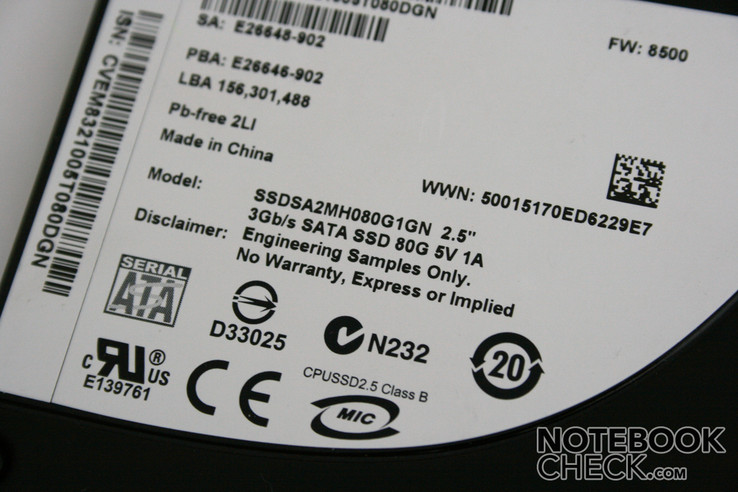
Performance
We tested the performance of the SSD in opposition to to the standard built in hard disk with 5400 rpm in our test notebook, the current top version MacBook (Unibody, 2.4 GHz, 9400M, 4 GB RAM).
The startup test was especially impressive: While 63 seconds elapsed between pressing the power button and the opening of the Firefox window on the MacBook with the standard disk, the SSD was ready for use in an unbelievable 26 seconds.
In the benchmarks we could barely establish a difference in the graphic benchmarks such as in the Cinebench R10. The test values with the standard disk were even a bit higher in the Geekbench; the Xbench, which explicitly tests the access times of the hard disk, then threw out very much better results for the SSD after all.
Even the HDTune showed very good values in comparison to normal hard disks, during the Write Benchmark you could notice the famous stuttering of the MLC SSDs though – thus the strong erratic performance of this construction during writing, but at a pleasantly low level.
The SSD didn't do its best in the benchmarks, but rather in normal working conditions: The fast startup times, the lowest latencies in opening files and programs and actually a very "zappy" feeling.
The battery life made itself pleasantly noticeable, as well; the runtime in the tested MacBook was extended by about 20 minutes in normal use (surfing, office, etc).
A further positive aspect is the absence of any noise or vibrations from the hard disk. As the high-frequency rotations are slightly noticeable on the wrist supports above the standard disk and a high-frequency summing is noticed on the rim of perception, this is cut off completely with the solid state drive.
Verdict
The Intel SSC X25-M 80 GB is superior to a normal hard disk in almost every field, but especially the secondary advantages like low energy needs, complete absence of noise and vibration, low weight and impact insensitivity makes the Intel SSD to an perfect choice for fans. While we can recommend the tested SSD without restrictions, the write performance of MLC SSDs of other manufacturers still has the biggest question mark.
The technique will most likely replace standard notebook hard disks in the long run – but those jumping on the bandwagon now are going to pay the early adopter surcharge, as usual. The Intel SSD X25-M costs about €380 at the moment. For whom 80 GB aren't enough, they can build in the X25-M 160 GB with twice the capacity and the same technology for €730.




